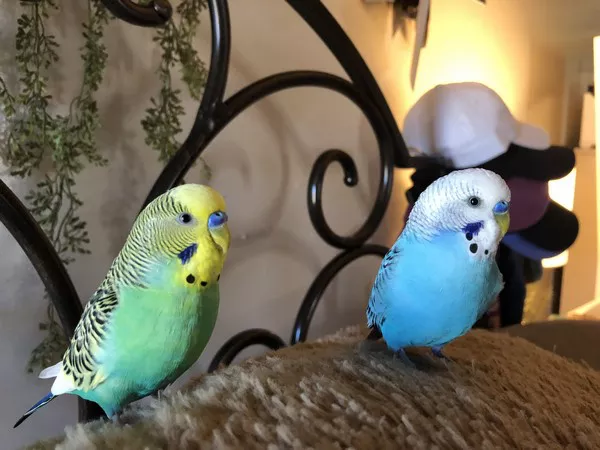Painted turtles, scientifically known as Chrysemys picta, are among the most recognized and adored turtles in North America. Their unique appearance and fascinating behavior have captivated the interest of both enthusiasts and researchers. One of the most common inquiries about these charming creatures pertains to their lifespan: how long does a painted turtle live? This article aims to delve into the longevity of painted turtles, exploring various factors influencing their lifespan and shedding light on the intricacies of their existence.
The Painted Turtle: An Introduction
The painted turtle, with its distinctive red and yellow stripes on its neck, legs, and shell, is indigenous to North America. These striking markings are what lend this species its name. Found in a variety of habitats such as ponds, marshes, and slow-moving streams, these turtles are well-adapted to both aquatic and terrestrial environments.
Their omnivorous diet, composed of plants, insects, and small aquatic creatures, contributes to their resilience and survival skills.
Factors Influencing the Lifespan of Painted Turtles
How long does a painted turtle live is a question influenced by several key factors. Genetics, environment, diet, predation, and human intervention are all critical elements that affect their lifespan. Genetics determine the inherent health and resilience of these turtles. The environment they inhabit plays a crucial role in providing suitable conditions for their survival. A healthy and diverse diet contributes significantly to their overall well-being. However, the threat of predators and the impact of human interference cannot be overlooked when discussing the lifespan of painted turtles.
Genetics and Lifespan
The genetic makeup of painted turtles heavily influences their lifespan. While some individuals might possess genetic advantages that contribute to a longer life, others may be predisposed to certain health issues that can affect their longevity. Factors such as immune system strength, disease resistance, and overall health are intrinsically tied to their genetic composition.
Environmental Impact on Lifespan
The environment in which painted turtles reside is a crucial determinant of their lifespan. Clean water, suitable basking sites, and adequate shelter are vital for their survival. Pollution, habitat destruction, and climate change can significantly impact the quality of their habitat, ultimately affecting their longevity. Research has shown that turtles living in more pristine and well-maintained habitats tend to live longer than those in degraded environments.
The Role of Diet in Longevity
A balanced and varied diet is crucial for the health and longevity of painted turtles. Their omnivorous nature allows them to consume a wide range of foods, including aquatic plants, insects, small fish, and even carrion. A diverse diet ensures that they receive essential nutrients necessary for growth, shell development, and overall health.
Turtles with access to a rich and varied food supply are more likely to live longer than those with limited dietary options.
Predation and Human Impact
Predation is a significant threat to the lifespan of painted turtles. Eggs, hatchlings, and adult turtles face predation from various animals like raccoons, foxes, birds, and larger aquatic species. Human impact through habitat destruction, road accidents, and illegal capture for the pet trade also contributes to the declining population and reduced lifespan of these turtles.
Longevity in Captivity vs. Wild
How long does a painted turtle live in captivity compared to their lifespan in the wild is a common query among turtle enthusiasts. Under optimal conditions, painted turtles can live significantly longer in captivity than in the wild. Proper nutrition, protection from predators, and veterinary care contribute to their enhanced lifespan in captivity.
While some individuals have reported painted turtles living for over 40 years in captivity, the average lifespan tends to be slightly longer than those in the wild due to these controlled factors.
Lifespan Variations Among Painted Turtles
The lifespan of painted turtles can vary significantly based on different subspecies, geographic locations, and individual health. Subspecies such as the midland, eastern, southern, and western painted turtles might exhibit slight variations in their average lifespans. Additionally, turtles in the wild might have a different average lifespan compared to those living in urban or suburban environments.
Understanding Longevity Studies and Research
Scientific research plays a vital role in understanding the lifespan of painted turtles. Longevity studies involving the tracking and monitoring of individuals in the wild, as well as observations of turtles in captivity, contribute to our understanding of their lifespan. Such research provides valuable insights into the factors affecting their longevity and aids in conservation efforts to protect these magnificent creatures.
Conservation Efforts for Painted Turtles
Conservation initiatives are crucial for protecting painted turtles and ensuring their continued existence in the wild. Preserving their natural habitats, controlling pollution, managing human intervention, and raising awareness about the importance of these turtles in ecosystems are vital steps in safeguarding their future. Collaborative efforts between scientists, conservationists, policymakers, and the public are instrumental in ensuring the longevity of painted turtles.
Conclusion
In conclusion, the lifespan of painted turtles is influenced by a myriad of factors such as genetics, environment, diet, predation, and human impact. How long does a painted turtle live is a complex question with no singular answer. The average lifespan of a painted turtle in the wild ranges from 15 to 25 years, while in captivity, they can live significantly longer. Understanding the intricacies of their existence and the factors affecting their longevity is pivotal for their conservation and the continuation of these captivating creatures for generations to come.
Efforts to protect their natural habitats and mitigate human impact are essential in ensuring a healthy and sustainable future for these iconic turtles.
FAQs about Painted Turtles:
1. How long does it take for a painted turtle to reach maturity?
Painted turtles reach sexual maturity between 5 to 10 years of age. However, their size can be a more accurate indicator of maturity than age.
2. What do painted turtles eat?
Painted turtles are omnivores, feeding on a variety of aquatic plants, insects, small fish, and crustaceans. Their diet usually consists of algae, snails, aquatic vegetation, and occasionally, small fish.
3. Do painted turtles hibernate?
Yes, painted turtles hibernate during the winter. They bury themselves in mud at the bottom of ponds or slow-moving streams and remain dormant until the weather becomes warmer.
4. How can one differentiate between male and female painted turtles?
One way to distinguish between male and female painted turtles is by their size. Females are generally larger than males. Additionally, males tend to have longer front claws and a slightly concave plastron (the lower part of the shell) compared to females.
5. Are painted turtles good pets?
Painted turtles can make good pets, but they require proper care and a suitable habitat. It’s essential to ensure they have adequate space, UVB lighting, a balanced diet, and clean water to thrive in captivity.
6. Can painted turtles live alone, or do they need company?
Painted turtles are generally solitary creatures and can live alone. However, they are not territorial and can coexist peacefully with other turtles if provided with enough space and resources.
7. Do painted turtles bask in the sun?
Yes, painted turtles bask in the sun to regulate their body temperature. They often perch on logs, rocks, or other objects near water to soak up the sun’s warmth.
8. Are painted turtles endangered?
Painted turtles are not currently considered endangered, but they face threats due to habitat destruction, pollution, and illegal collection for the pet trade. Several states have regulations to protect them due to these concerns.
These frequently asked questions about painted turtles cover various aspects of their behavior, care, and natural habitat, providing insights for enthusiasts and those interested in these fascinating reptiles.
Related Topics:
Can Turtles Hear Sound? Senses, Facts
How Long Do Box Turtles Live in Captivity?
How Long Do Sea Turtles Live? And Other Sea Turtle Facts

























